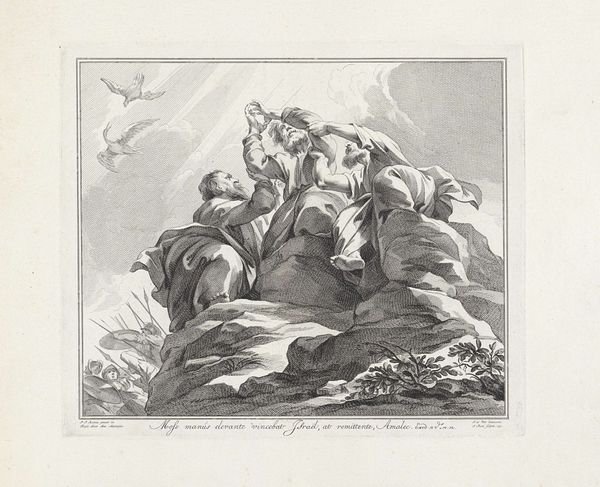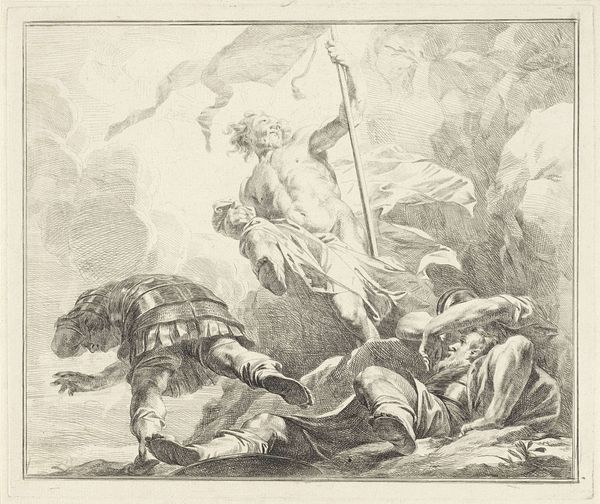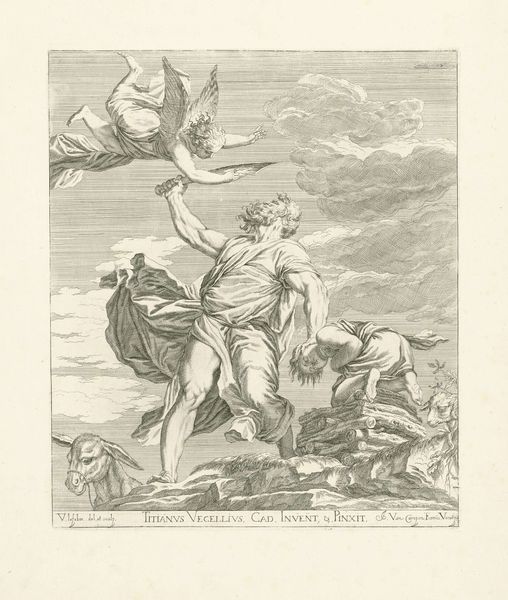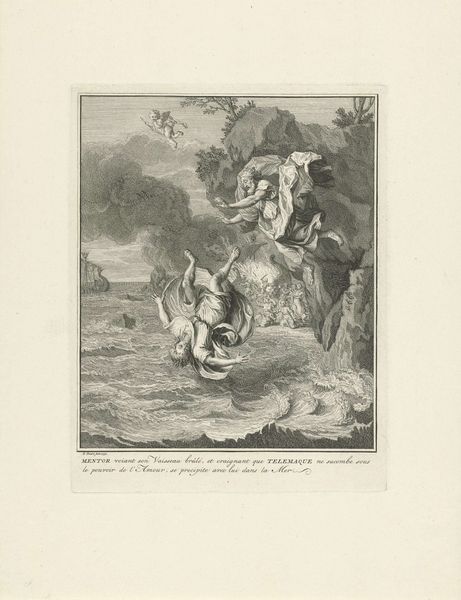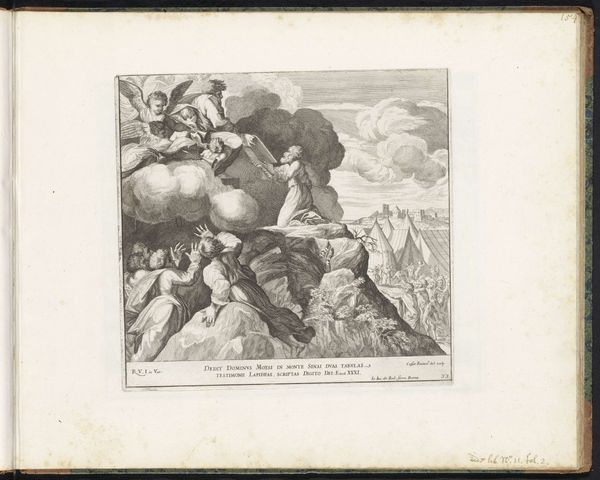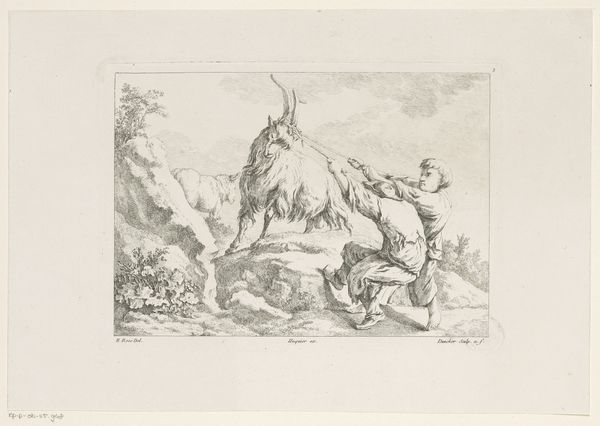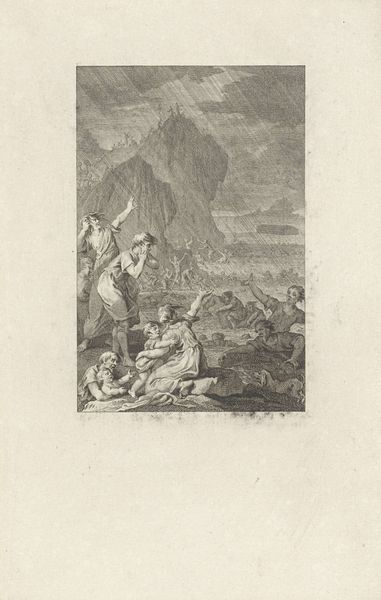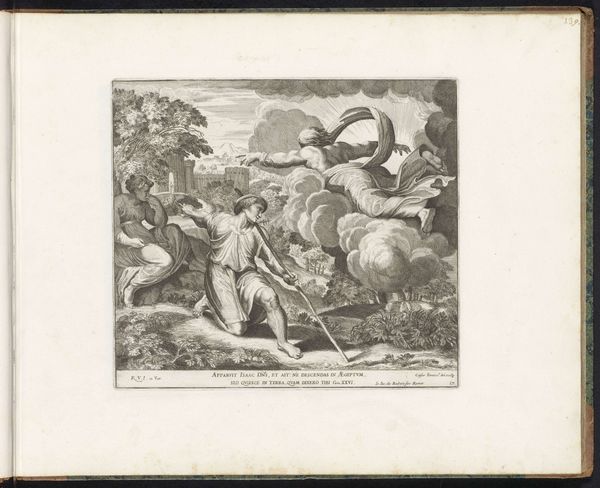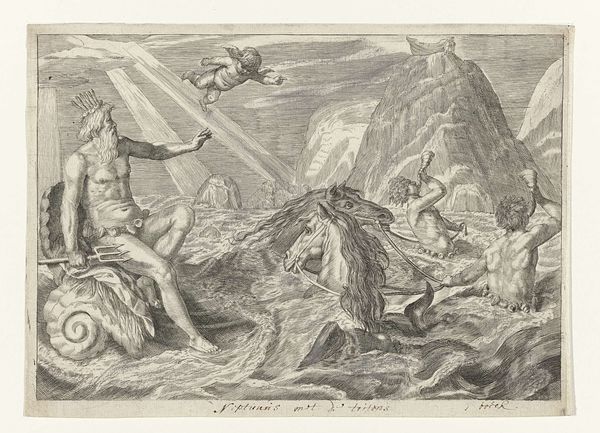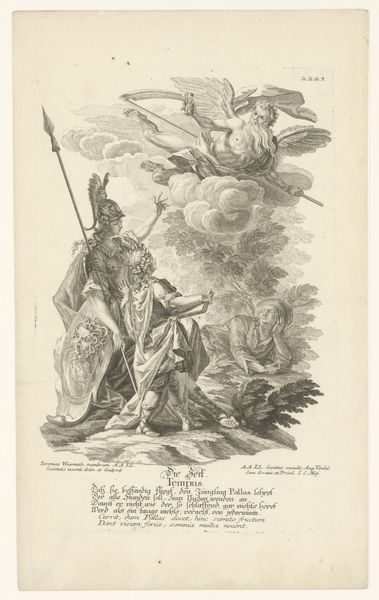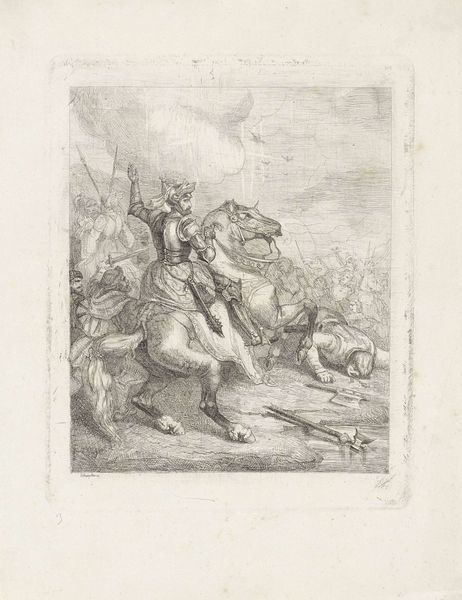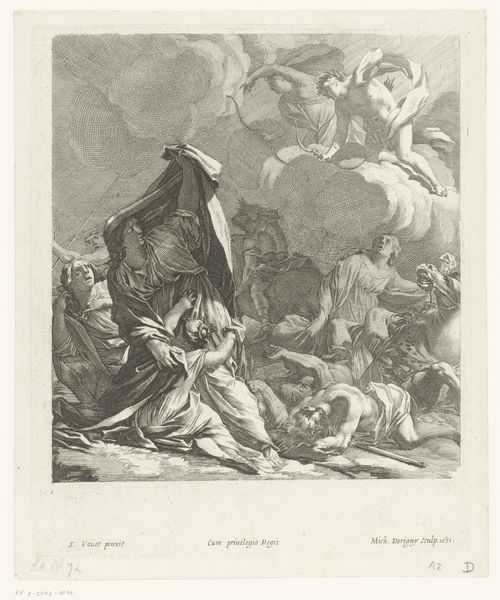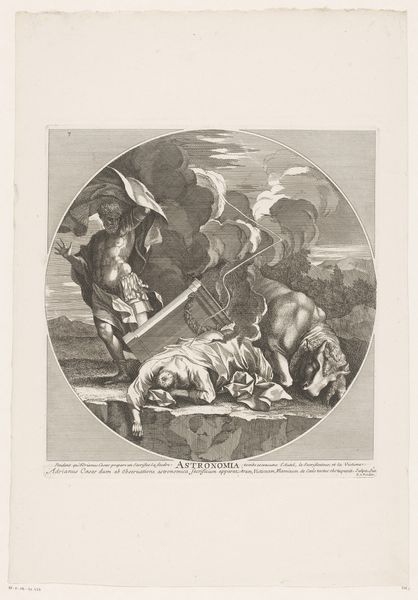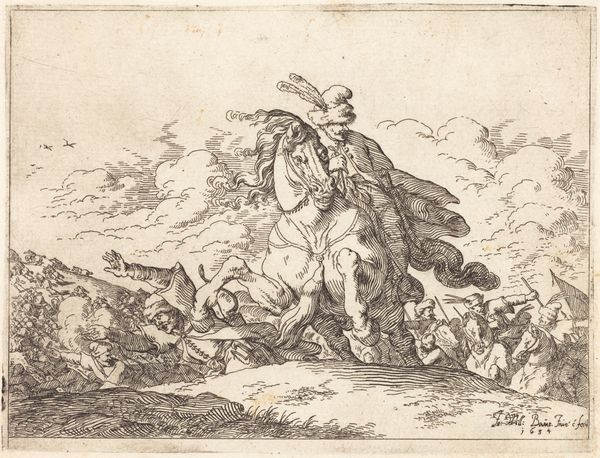
print, engraving
narrative-art
baroque
old engraving style
figuration
history-painting
engraving
Dimensions: height 337 mm, width 409 mm
Copyright: Rijks Museum: Open Domain
Curator: This engraving by Jan Punt, made in 1752, depicts David beheading Goliath, a dramatic moment rendered in a distinctive Baroque style. What are your initial impressions? Editor: It’s stark. The contrasting tones and the composition really drive home the brutality. All that pale skin against the dark outlines… the composition directs your eye right to that sword. Curator: The act of beheading certainly conveys that, doesn’t it? We’re presented with a biblical story that speaks to liberation. David, a young shepherd, defeats Goliath, a Philistine warrior, symbolizing the triumph over oppression. Think about what that narrative would mean to viewers in 18th-century Europe. Editor: But isn’t the focus more about the decisive moment? Look at the angle of David’s body, the foreshortening—it's a masterclass in Baroque dynamism. Punt uses line weight to build depth, creating this visual push and pull. Note the way Goliath is being positioned on the ground while David's figure stands tall against a cloudy backdrop. Curator: Exactly, and to expand on that dynamism, we can’t ignore the historical context in which this work was created and viewed. This image and narrative were tools in which questions around the power of leadership, right to rule and liberation from oppresion were negotiated. This depiction isn’t just about an underdog succeeding against a giant, but speaks to the moral obligations surrounding justifiable revolt. Editor: I can definitely see your point. It really highlights the complexities woven into even the seemingly straightforward biblical story. But back to composition for a second; the background with the faint eagle could be another symbol of the future. It mirrors what is on the ground. Curator: A hopeful contrast indeed. Ultimately, this artwork invites us to consider the various power dynamics between individuals, society and authority and to reflect on the long-lasting legacies of resistance. Editor: A valuable synthesis of form and socio-political significance. Thank you for illuminating those important aspects.
Comments
No comments
Be the first to comment and join the conversation on the ultimate creative platform.
